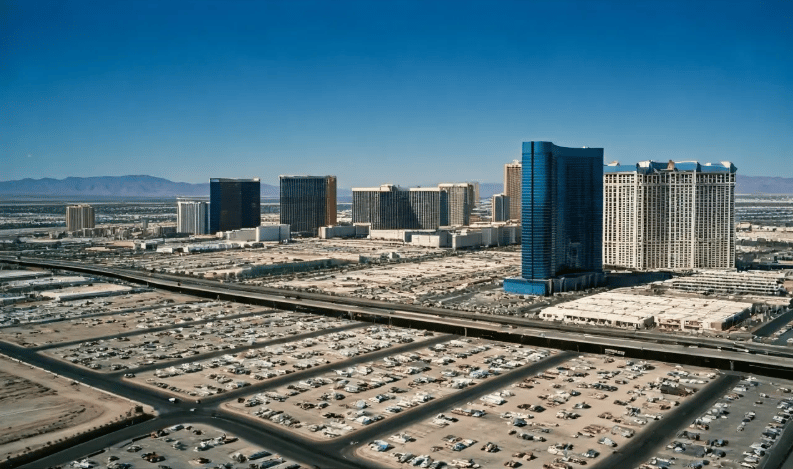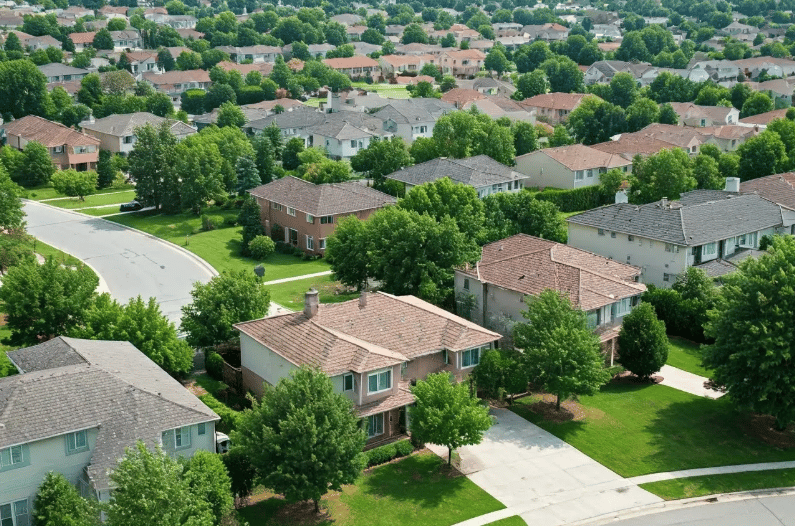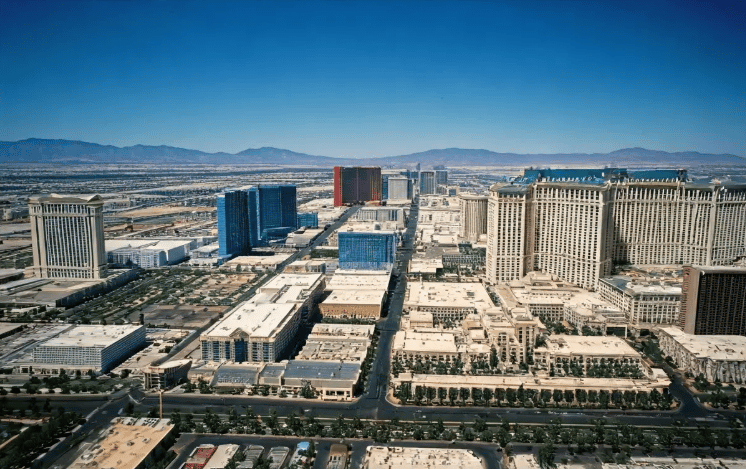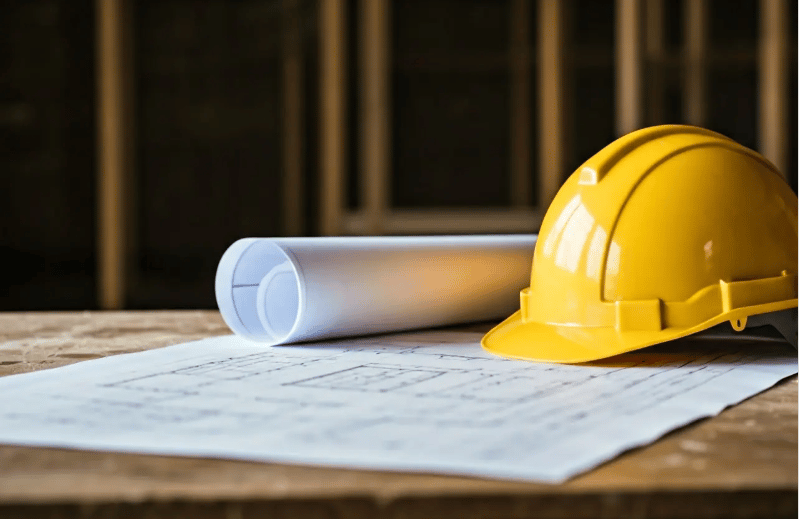15 Emerging Vegas Real Estate Trends to Influence Your Next Move
The Las Vegas real estate market is constantly evolving, offering new opportunities for buyers, sellers, and investors alike. From unexpected neighborhoods gaining popularity to innovative sustainable designs, these trends are shaping the future of real estate in this dynamic city. Whether you're considering a move or an investment, understanding these trends can provide valuable insights for your next big decision.
1. Rise of Sustainable Architecture
Eco-friendly and sustainable building designs are becoming increasingly important to Vegas developers. This trend is driven by a growing demand for environmental responsibility and resource-efficient buildings. Developers are incorporating green building certifications and renewable energy sources, such as solar panels, to appeal to environmentally conscious buyers. These sustainable initiatives not only reduce the carbon footprint but significantly enhance property value and marketability. The infusion of nature into urban architecture transforms mundane buildings into life-enhancing spaces, promoting healthier living. In response to consumer demand, architects are now intertwining sustainability with aesthetics, offering homes that are both visually stunning and environmentally friendly.
The focus on reducing energy consumption is propelling developers to embrace cutting-edge technologies. Smart climate control systems and energy-efficient appliances are becoming standard in new constructions across Las Vegas. This trend presents an opportunity for buyers to invest in homes that offer long-term savings through reduced utility costs. Moreover, the shift towards environmentally conscious building practices reflects a broader societal push towards sustainability, encouraging other cities to follow suit. By choosing homes with eco-friendly features, buyers not only invest in their future but contribute positively to the planet's well-being.
2. The Appeal of Urban Living
As more people seek vibrant, walkable communities, urban living is gaining traction in Las Vegas. The surge in mixed-use developments is providing residents with easy access to amenities and entertainment. These developments blend residential, commercial, and recreational spaces, creating neighborhoods that foster community engagement and reduce reliance on cars. As Las Vegas continues to evolve, so do the opportunities for urban living. Downtown Las Vegas has seen significant growth, with new restaurants, boutiques, and galleries contributing to a lively atmosphere.
The transformation of urban spaces is appealing to younger demographics who prefer convenience and social interaction over suburban isolation. This shift has been particularly noticeable in areas like Fremont Street, where revitalization efforts have breathed new life into historic properties. Urban living not only caters to the desire for a dynamic lifestyle but also resonates with those looking to reduce their carbon footprint by living in communities that prioritize pedestrian-friendly infrastructure. By capitalizing on these emerging trends, property developers aim to make urban living a desirable and stylish choice for all.
3. Technological Integration in Homes
Smart home technology is becoming a standard feature in new homes. Buyers are increasingly looking for properties with integrated tech solutions that provide convenience and security. Home automation systems allow residents to control lighting, temperature, and security surveillance with the touch of a button, significantly enhancing the living experience. As technological advancements continue to evolve, developers are embedding more complex systems, such as voice-activated assistance and advanced security measures, into homes.
4. Popularity of Suburban Neighborhoods
Suburban areas surrounding Las Vegas are witnessing a resurgence as people look for larger spaces with the benefits of community living. These neighborhoods offer a balance between tranquility and proximity to the city. Areas like Summerlin and Henderson are attracting families and professionals seeking spacious living with access to quality schools and outdoor activities. As remote work becomes a norm, the demand for properties that offer home offices and expansive yards has skyrocketed, making suburban locales a coveted choice for many.
The appeal of the suburban lifestyle also ties into the desire for a closer-knit community. Neighborhoods with parks, community centers, and recreational spaces foster a sense of belonging and camaraderie among residents. Developers are responding by designing subdivisions that prioritize community interaction, offering amenities such as walking trails, sports facilities, and clubhouses. This strategic planning enhances the overall quality of life, making suburban neighborhoods attractive to those who value both space and community involvement.
5. The Growth of Multi-Family Developments
With an increase in population and rental demand, multi-family developments are on the rise in Las Vegas. These provide flexible living options and are attracting both young professionals and older homeowners. Multi-family units, including apartments and townhouses, offer a practical solution amidst increasing property prices, as they allow for shared amenities and maintenance responsibilities. The trend is further driven by the growth of rental markets, where investors are taking advantage of the steady demand for quality rental properties. As Las Vegas continues to expand, these developments are shaping a more inclusive and varied housing market.
6. Emphasis on Health and Wellness Features
Homebuyers are placing a higher priority on properties with health-focused amenities such as fitness centers, wellness spaces, and green areas. This trend is shaping new real estate projects. Developers are incorporating features that promote physical and mental well-being, catering to individuals who prioritize a balanced lifestyle. In Las Vegas, residential complexes with yoga studios, meditation gardens, and access to hiking trails are becoming increasingly popular. These amenities not only add value to properties but also create communities where wellness is an integrated aspect of everyday life.
7. Adapting to Demographic Shifts
Developers are designing properties that cater to changing demographics, including millennials seeking affordable housing and baby boomers looking for more manageable homes. This shift is evident as housing designs are adjusted to meet evolving preferences, such as open floor plans for modern living and single-level homes for accessibility. The need for diverse housing types is paramount, as each generation brings unique demands to the market. Developers and investors keen on tapping into these demographic trends must stay informed to deliver tailored solutions that appeal to the broadest audience possible.
8. Evolving Mortgage Strategies
The real estate market is seeing new financing options aimed at increasing accessibility to homeownership, including flexible mortgage plans and incentives for first-time buyers. This evolution in mortgage strategies is crucial in a market where rising prices can be a barrier to entry. Programs offering lower down payments, interest rate reductions, and buyer education initiative are becoming widespread, addressing affordability concerns. These strategies not only facilitate property purchases but also support a healthy market by encouraging participation from a diverse buyer demographic.
9. Creative Uses of Space
Innovative designs are transforming unused or underutilized spaces into thriving hubs for community and business, adding value to real estate investments. Concepts like vertical gardens, rooftop terraces, and shared workspaces are revitalizing urban landscapes, providing new life to neglected areas. These creative solutions not only maximize space efficiency but also contribute to a property's appeal, attracting both residential and commercial interest. The ability to repurpose space creatively is a significant advantage in cities like Las Vegas, where land can be at a premium. By utilizing cutting-edge design principles, developers can offer versatile living and working environments that meet contemporary needs.
10. Green Spaces in City Planning
Urban planning in Las Vegas is increasingly focusing on incorporating green spaces into developments, enhancing the quality of life and attracting eco-conscious buyers. The integration of parks, community gardens, and nature trails into residential areas provides residents with places for relaxation and recreation. Green spaces are essential for urban dwellers seeking an escape from the city's hustle and bustle, and developers are seizing on this trend to boost property marketability. These developments not only benefit the environment but also contribute to residents' well-being, offering a balance between urban convenience and nature's tranquility.




